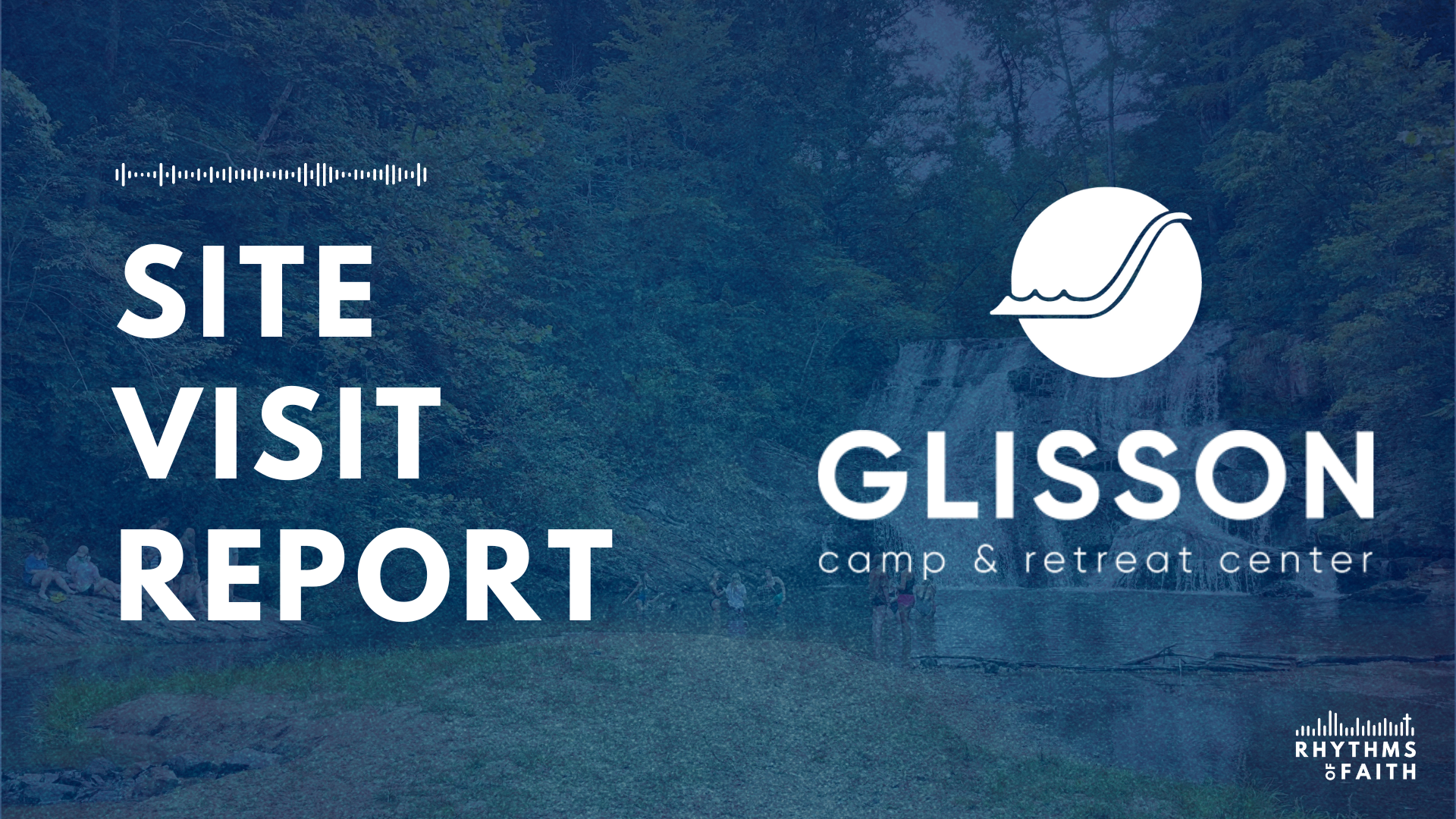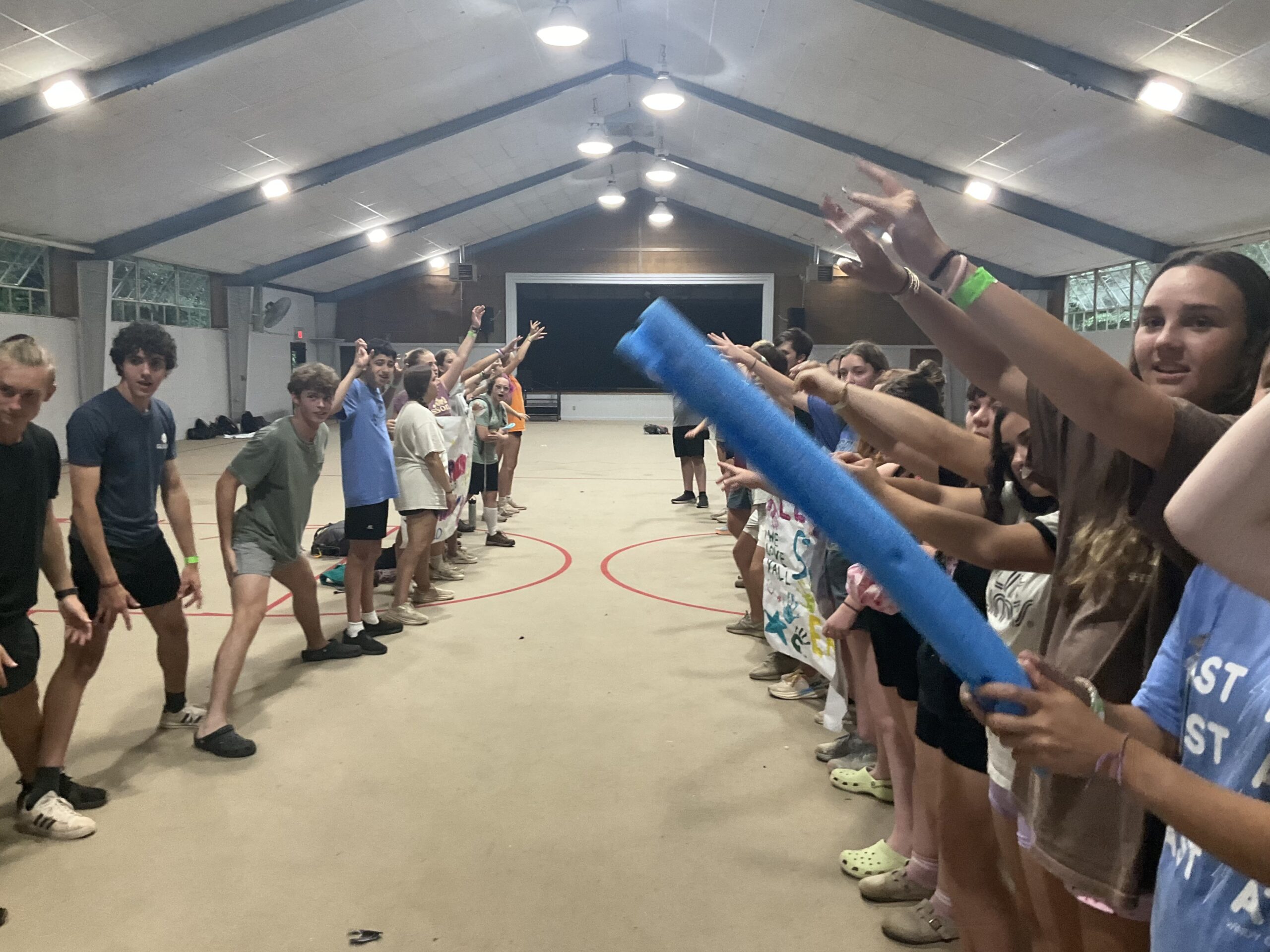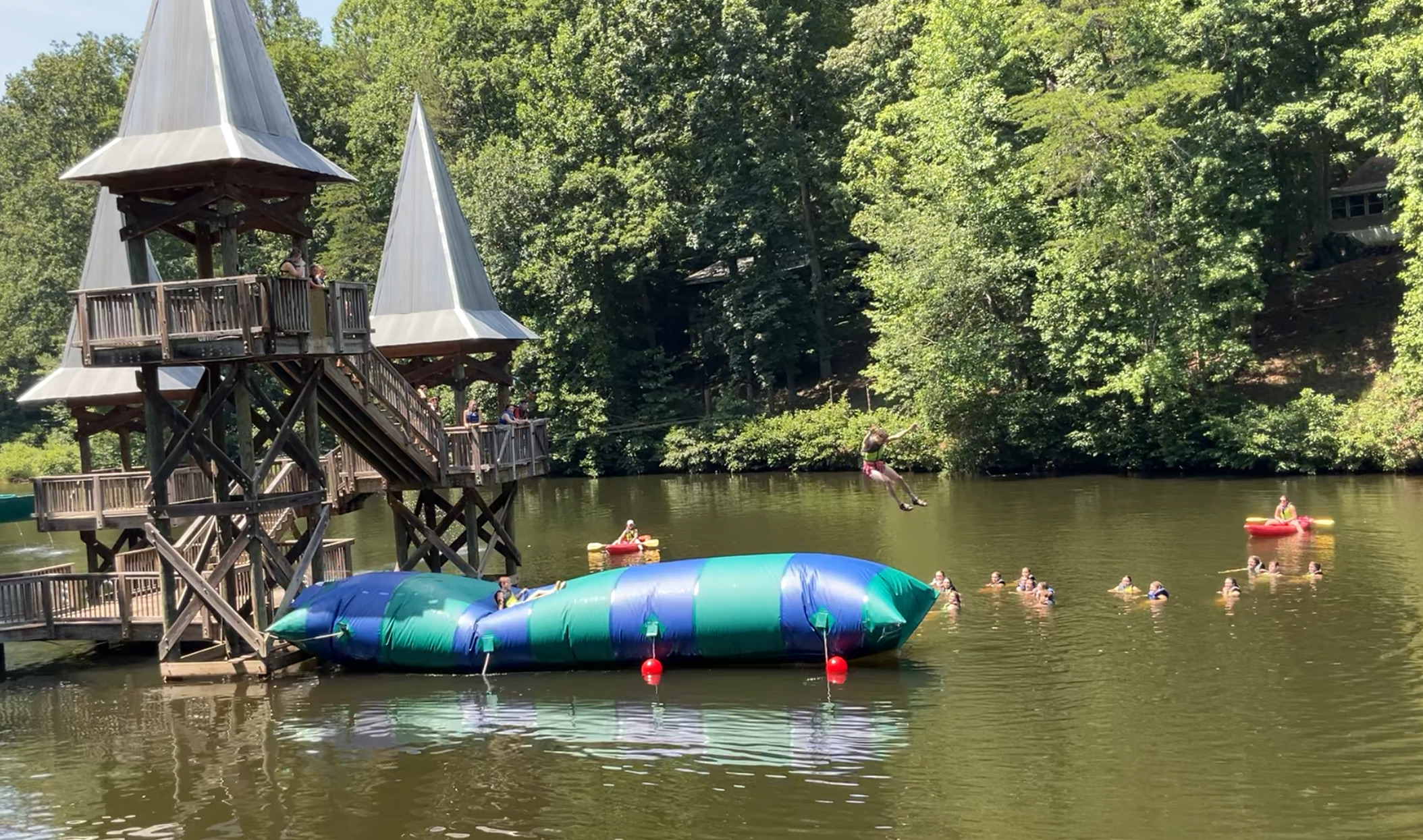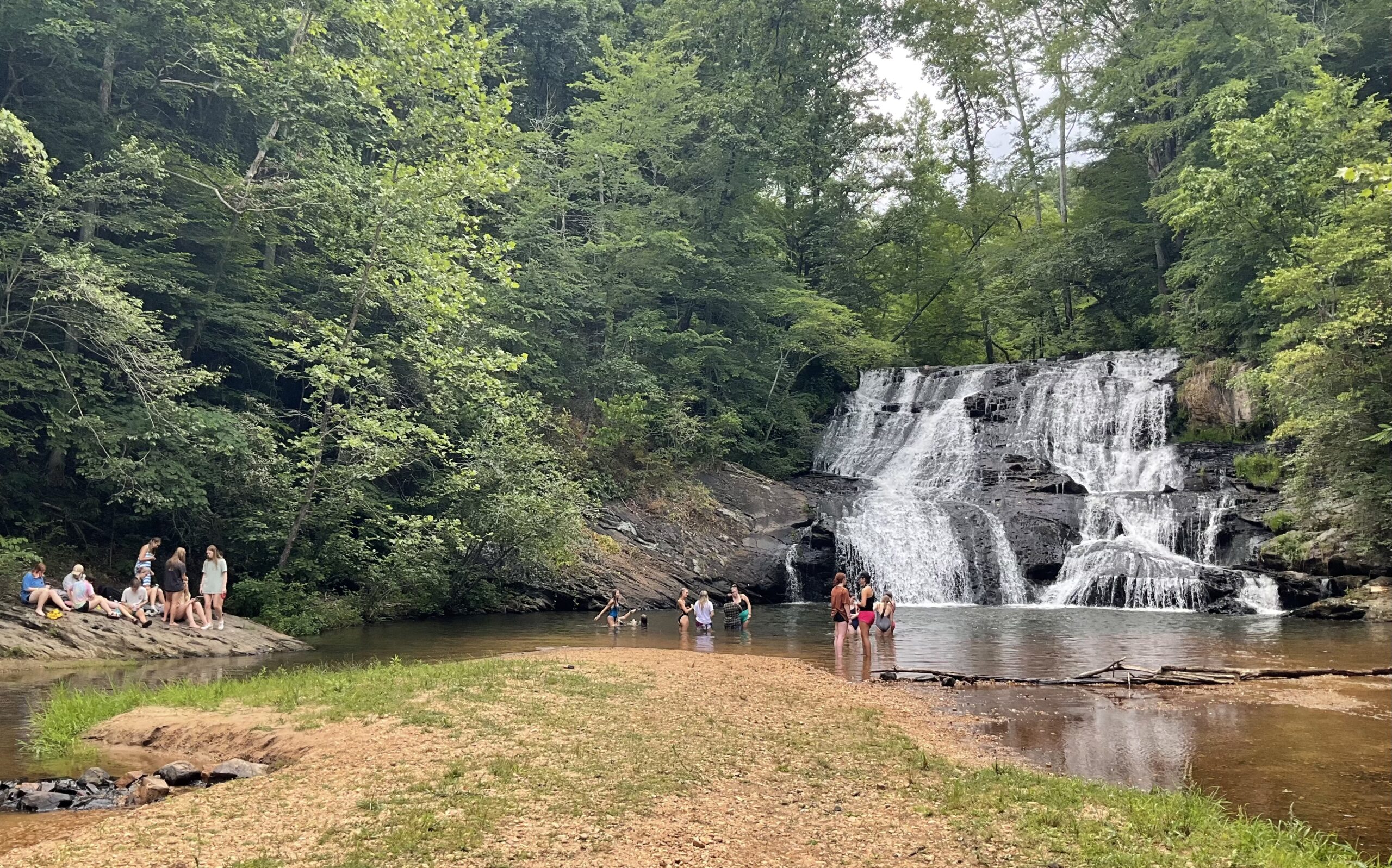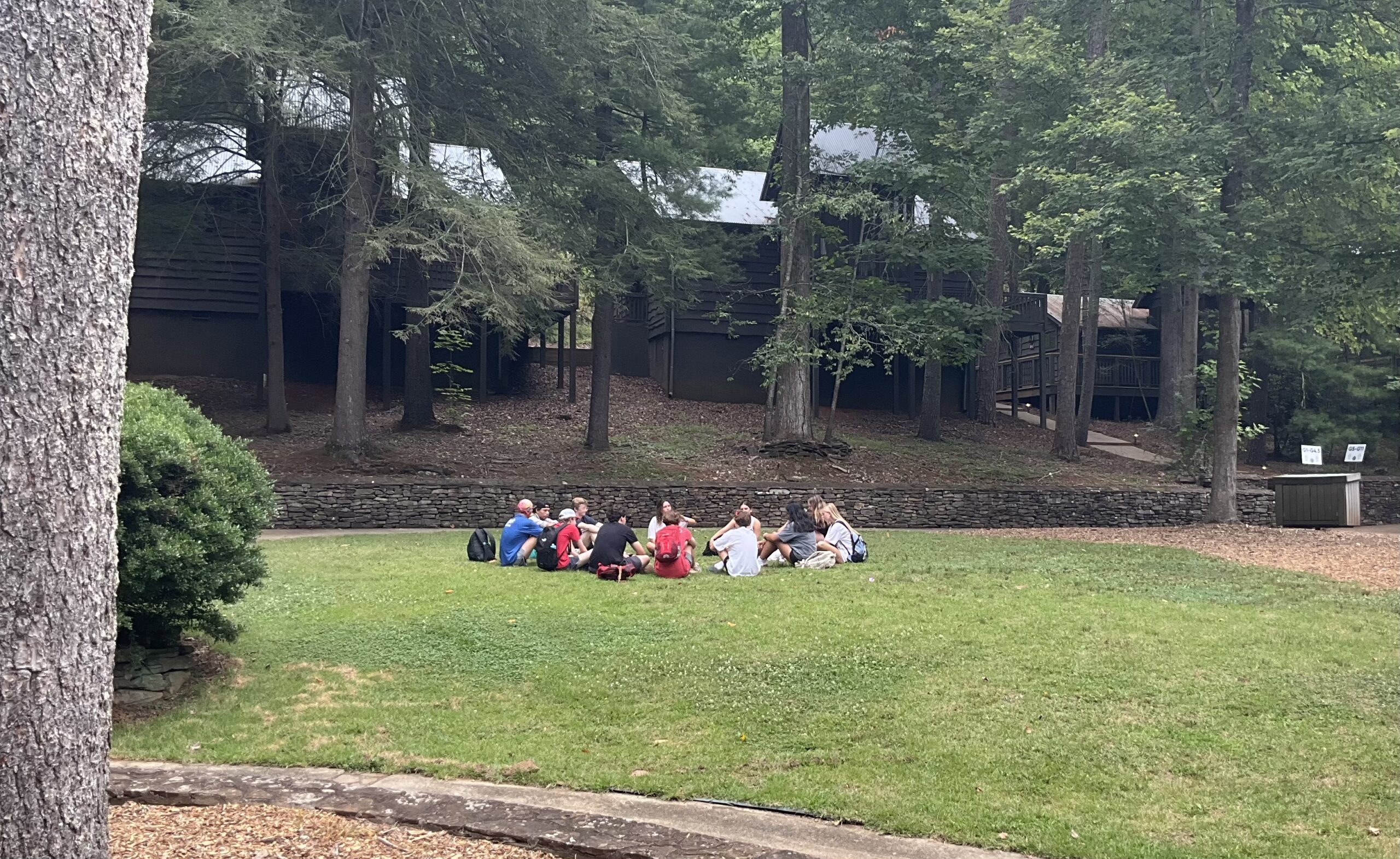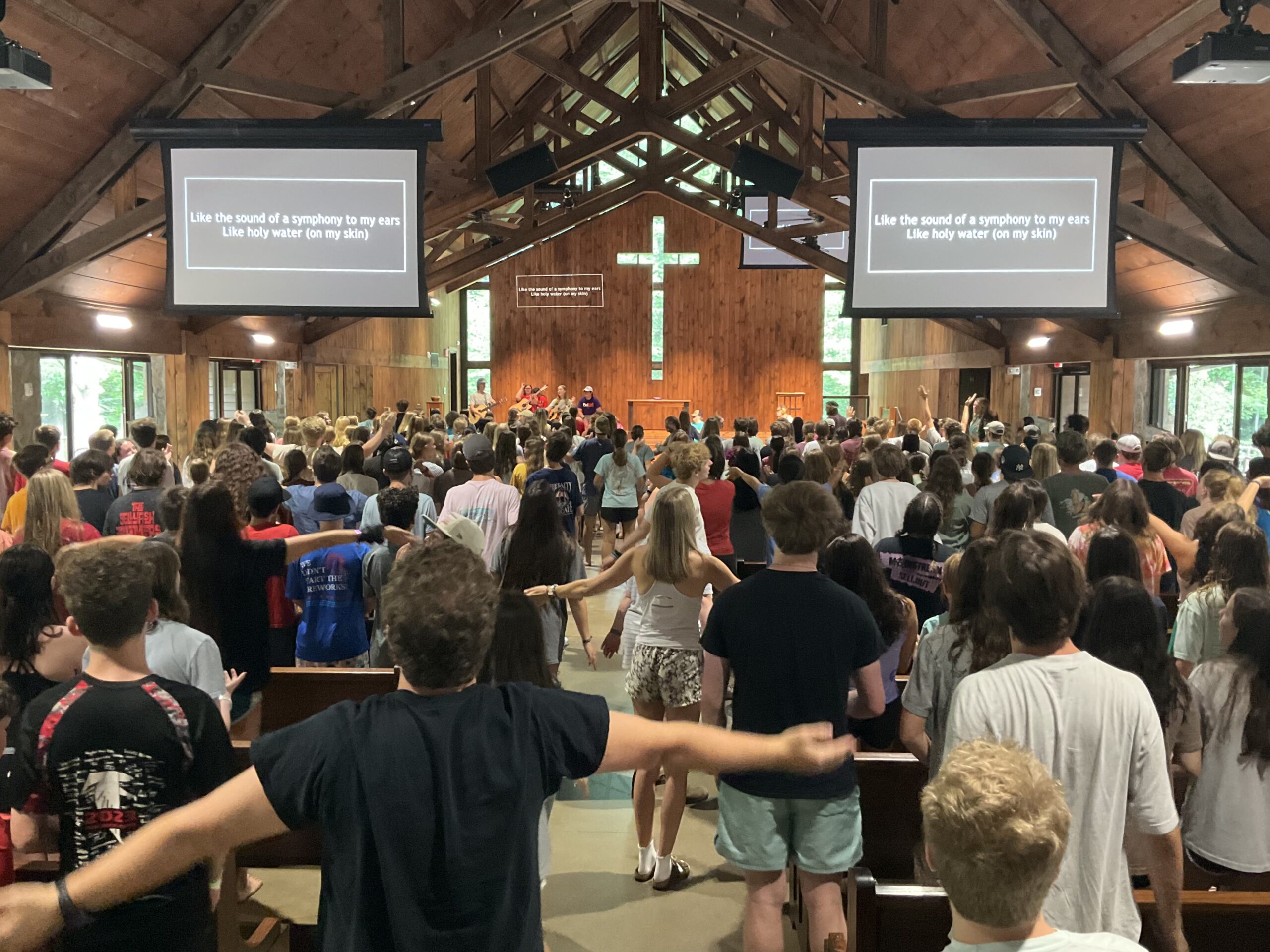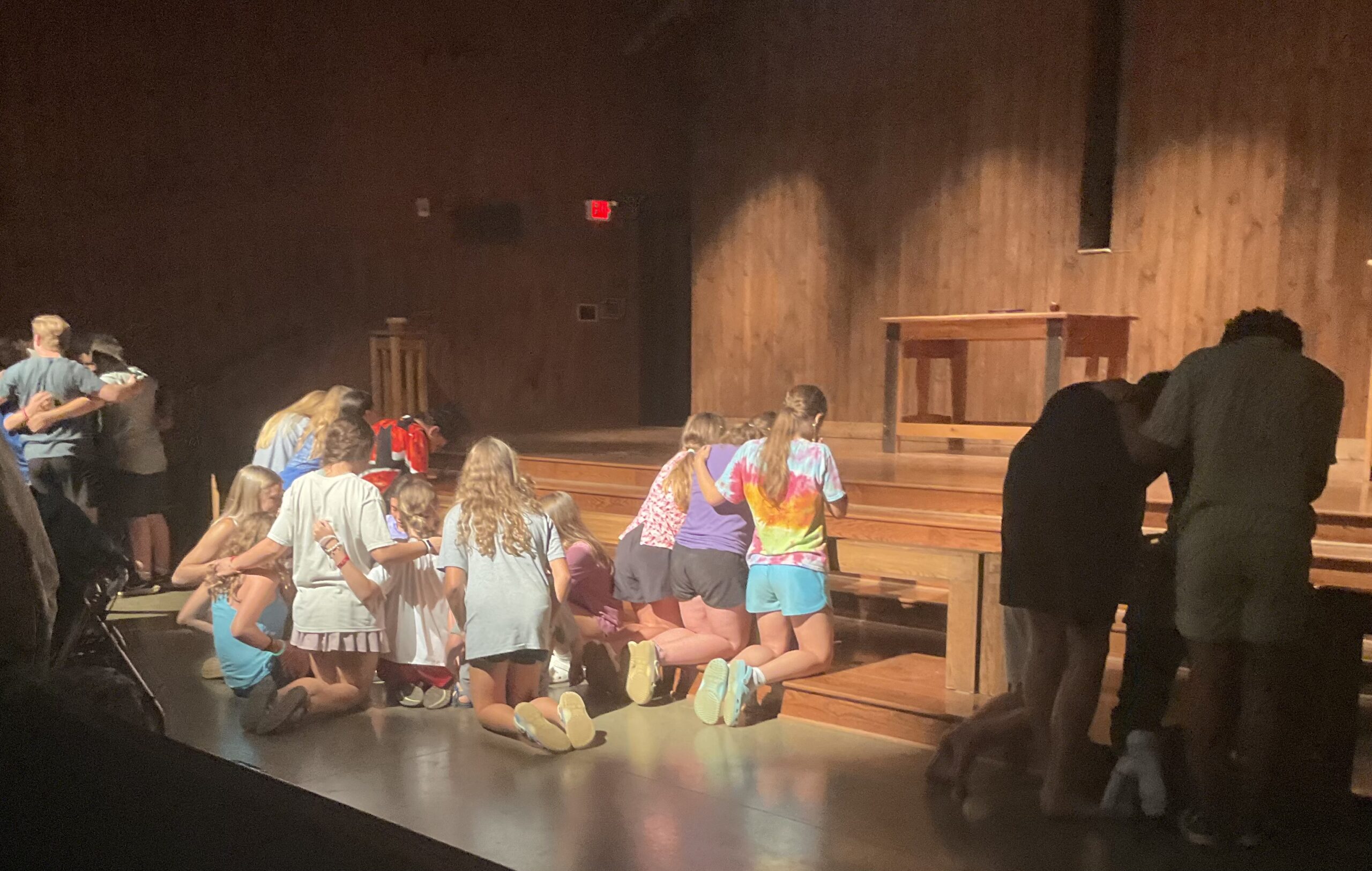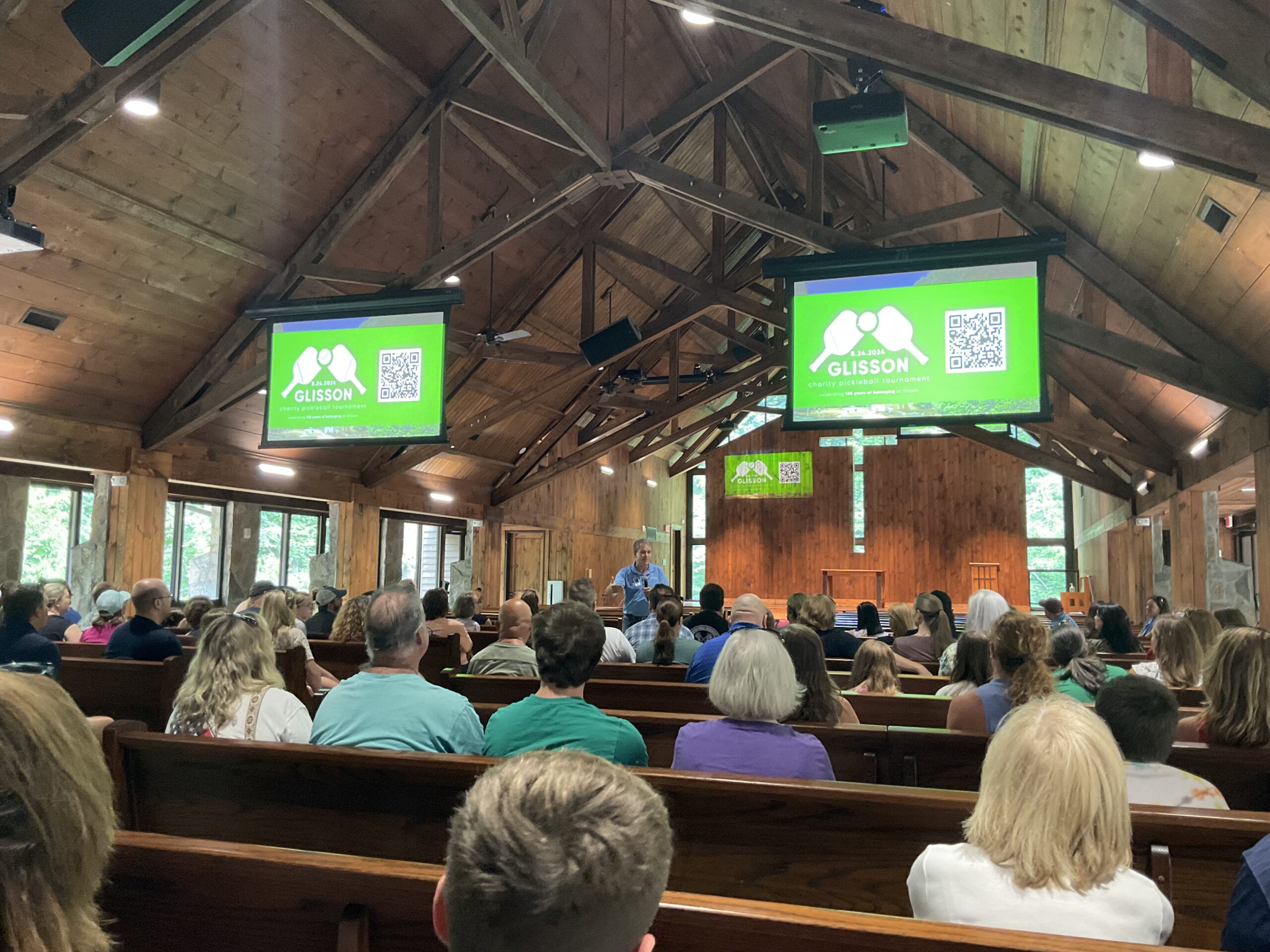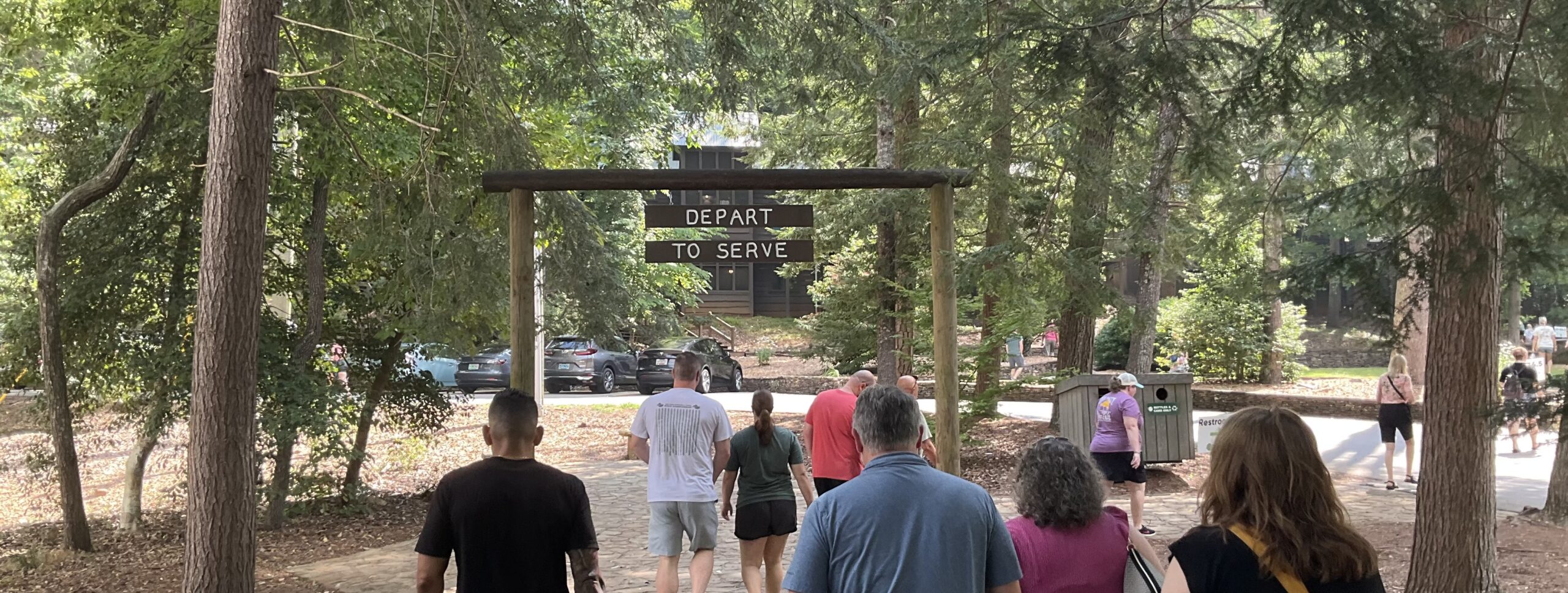Yea, Sparrowwood!
The joy was palpable, the compassion unmistakable. Hundreds of raucous, sweaty teenagers formed a receptive, snaking tunnel stretching out the doors and down the sidewalk in front of the large, un-air-conditioned rec center. The Sparrowwood campers paraded through, some hesitantly but most confidently, giving high fives and smiling ear-to-ear, as their partner living groups cheered them on by name.
It was my last night at Camp Glisson, a United Methodist camp nestled against the mountains of northern Georgia, just a few miles from the southern terminus of the Appalachian Trail and 90 minutes north of Atlanta. Glisson is the main site of North Georgia Camp and Retreat Ministries, which also includes Grow Day Camps, Shoreline Camps, and the Experiential Leadership Institute (ELI). I was there as a researcher for the Rhythms of Faith Project, which is investigating the role of camps as catalysts for family faith practices. Earlier that day, I spoke with two focus groups of campers, one high school and one junior high. They told me all about their week and informed me that the place to be that night was the Sparrowwood talent show.
Ostensibly, the event was not mandatory, but I could hardly tell that from the number of camper groups milling about when I arrived. My high school focus group spotted me and invited me to sit with them. “You’re one of us, now,” one of them said brightly. I sensed his earnestness and felt the deep meaning that comes from being welcomed and included. It was the second time in two days I had been invited into the intimacy of a “living group” (“LG,” for short). The first was the previous day, when a group of campers on the low ropes challenge course invited me to join them for a group building activity. I quickly joined my latest adopted LG in forming the tunnel, as the performers arrived to great fanfare. I have traveled to many camps and seen plenty of closing night talent shows, but nothing quite like “Sparrowwood’s Got Talent.”
Sparrowwood is a program designed for campers with different developmental needs, including mild to moderate disabilities. There are twenty Sparrowwood campers at Glisson every week of the summer alongside the more than 250 campers in the Village program, a traditional week-long summer camp featuring games, songs, adventure activities, and spiritual formation in small groups. The innovation is that LGs (generally consisting of 12 campers and 2 counselors) are partnered with 2 Sparrowwood campers and their counselor. This is designed to facilitate interaction and integrate them in multiple activities throughout the week. The effect was clear during the talent show, as Sparrowwood campers danced across the stage, haltingly lip-synched to pop music, and belted out the lyrics to beloved songs in varying keys and rhythms. After each performance, a counselor came forward to describe the joy of being with their campers that week, singling out personality traits and successes from the week, before presenting each camper with a certificate detailing a uniquely ostentatious award (e.g. “The Super-Sweetie Extra-Encouragement Shining Smile Award” and “The Kindest, Bravest Hiker-Hero Award”). The crowd of teenagers cheered, sang along, and gave repeated standing ovations. Living groups stood in support of their partner Sparrowwood campers, sometimes flanking them on stage or holding colorful banners they had made. Over 90 minutes into the show, their enthusiasm appeared undiminished. I scanned the crowd, and no one looked as if they were bored or would rather be anywhere but here.
The talent show was a clear embodiment of the camp’s core values: Christian community, radical acceptance, unconditional love, and experiential learning. It struck me that the teenage campers were learning the former three values through the experience and action of the fourth. I witnessed, heard about, and experienced these values multiple times in my visit to Camp Glisson.
“Everyone is just so welcoming, and I feel safe here,” one junior high camper explained in answer to why she returns year after year. Another chimed in, “A lot of camps say they’re accepting, and they’re not really. Camp Glisson really is.” Others described it as a place where they felt free from judgment, in contrast to other spaces, such as school. “This place makes me feel like I can come here and just be myself,” one said tearfully. “Like, there’s no pressure to be someone else.” The summer staff expressed similar thoughts, describing the camp community in familial terms. When asked to describe camp in three words, the first ones they used were “community,” “comfortability,” and “acceptance.”
Decentralized Programming
I arrived at Camp Glisson early Wednesday afternoon, midway through the camp week. The safety and acceptance the campers would later describe were clear from the start. Multiple staff members greeted me, and the director escorted me through a coded security gate onto the camp property. I have known the director, Russell Davis, for several years, and we quickly engaged in conversations about camp philosophy and programming, as we toured the camp’s sprawling 360 acres of forest, fields, hills, and ponds. He had just completed his 17th year as director of North Georgia Camp and Retreat Ministries, which was in its 99th year of ministry. In the early 2010s, the camp board had set a goal of doubling their summer camper numbers by 2020, and they achieved this goal a year early.
After the challenges of the COVID-19 years, which necessitated smaller camper groups, Glisson was nearly back to pre-pandemic camper numbers in 2024 and poised to grow further, with a master site plan designed to facilitate that growth. Despite the large camper numbers, Glisson clung to its philosophy of decentralized programming. Each living group (LG) ate meals together and participated in camp activities together. Because of campouts and a variety of dispersed program activities, the entire camp community was seldom together in one place. Russell explained that this decentralized model, combined with regular faith practices, was designed to facilitate Christian community. He most wanted the campers to take away from the experience Christian values like unconditional love, generosity, and acceptance, much more than any specific theological doctrine.
This decentralized programming was on display in our tour around camp. We found campers around every corner and over every hill, always in their small LGs: kayaking on the upper lake, going down water slides in the lower lake, navigating the low ropes challenge course, ascending the climbing tower, swinging on the giant’s swing, riding the zip lines, playing field games, doing arts and crafts projects, and, of course, creek hiking.
“What’s your theme?” Russell asked a group of giggling campers as they splashed in the creek. “Sitcoms!” they replied enthusiastically. They were on a creek hike, I learned. Creek hiking is a popular activity at Glisson. The shallow Cane Creek winds its way through the property. Campers can hike in the creek for hundreds of yards, staying cool despite the Georgia summer heat. The reward at the end is the spectacular Cane Creek Falls, a stunning 30-foot high waterfall as wide as the creek and cascading into a broad pool of water. Each hike had a creative theme, occasionally accompanied by costumes, songs, or play-acting (I enjoyed shadowing a Star Wars themed hike later in the week). We continued on our journey, as a vaguely familiar theme song from a 90s sitcom faded downstream.
It struck me on that hot Georgia afternoon that the only program area we came across without any campers was the pool. Campers were cooling off at both lakes and in the creek, opting for those more novel experiences. Though the pool was active during most other activity times, this highlighted the outdoor adventure focus of the camp programming. Very few activities took place inside, and programs were designed to facilitate interaction with the outdoors. LGs spent at least one night in open air shelters at one of several campout locations, cooking their dinner over the fire. A separate program took place at the rustic “Outpost” site at the far end of camp. Many of these campers went on offsite adventure trips (e.g. backpacking or kayaking). They cooked most of their meals over the fire and learned outdoor skills like knot tying and shelter building.
God is all around us.
After each activity, the LGs gathered as a small group and debriefed the experience using the basic method of “What? So what? and Now what?” This was designed to process the group experience and connect it to their faith and their lives away from camp. It became clear that there were deep and meaningful faith connections happening in the small group conversations. As one camper reflected about her camp experience, “It feels like God is all around us, like with us wherever we are.” They recognized that everything had a faith connection.
The intentional faith conversations facilitated this understanding, alongside a rhythm of daily faith practices. The campers began the morning with a devotional time called morning watch, which generally featured meditation practices, reflection on a biblical passage, or a conversation about their intentions for the day. The day was then framed with morning chapel and evening chapel, which introduced and deepened reflection on the daily Bible theme.
The religious programming was intentionally connected with the local church. One of the clearest indicators of this was clergy involvement. While on site, I was hoping to conduct a focus group with a small group of 6-8 church leaders, so Russell put out a request to area clergy. The response was so overwhelming that we had to do two focus groups to accommodate the 16 church leaders that came to camp especially for this purpose. They described the deep connection they felt to the camp and the ways in which the camp intentionally partnered with them through things such as church retreats throughout the year, inviting them to participate in camp programs, and providing a list of church members who attended summer camp. They also lifted up Grow Day Camps, in which camp staff are deployed to lead day camps at local churches, as a valued partnership program. Glisson was clearly a well-regarded ministry partner in the North Georgia Conference of the UMC. Several of the clergy spoke about personal experiences at camp that had strengthened their faith, and one indicated that camp was the primary place where she discerned God’s call to ministry. It helped that campers saw diversity in the leadership, including female clergy and people of color. Regardless of race, gender, or physical ability, they could envision themselves in the community and in leadership. Glisson was actively working to welcome people of color into a community that was still predominantly white, a historical challenge in their area of southern Appalachia.
The chapel was a testament to the strong church connection. It was constructed as a church building, featuring a long nave with row after row of hardwood pews and a large chancel area, complete with table, font, and rail. Unlike the rec center, this space was temperature controlled. Each week, there was a theologian-in-residence (TIR), a local United Methodist clergy person who led chapel services, including preaching on the daily text. In these ways, chapel time was designed to look and feel like a church service, though one camper focus group described feeling that it was “for them” in a way that they did not always feel at their home church. Three aspects were crucial in facilitating this feeling. First, the campers explained that they were with peers their own age, in contrast to some of their church communities, which they described as mostly older people. Second, the chapel services were highly participatory, with engaging songs and opportunities to move around. Third, campers were involved in leadership. One LG helped plan and lead each chapel service, including selecting the songs, leading the prayers, and presenting the scripture passage, usually with a combination of reading and an illuminative skit. And, of course, the Sparrowwood campers were heavily involved, including one young man banging a hand drum with gusto during the songs.
Evening chapel ended late, especially for the high school campers. They had just spent the better part of an hour swaying together to music, praying, and hearing an inspiring sermon from the TIR. But nobody left. Individuals, pairs, and entire LGs approached the rail. Some knelt. Some stood in circles and embraced. Others laid hands on someone who was praying. The campers described this as “altar time.” I learned that some campers professed their faith for the first time at this altar. I also learned from the pastors that this practice carried over beyond the camp experience. One explained his experience bringing young people to camp for confirmation retreats, and he said that, without fail, he would witness the campers praying for one another and laying hands on each other. “This is a special place,” he said, “and the Holy Spirit is present here.” Another pastor described it as a “faith immersion” experience.
Bibs to Aprons
The camper was in tears, as she recounted her experience during altar time the night before and how much her fellow campers meant to her. I was with my junior high focus group. They had grown very close, like family, one said, and they would be departing the next day. Not all of the campers had robust faith lives back home, and not all of their families were regular church attendees or even said grace at mealtimes more than on special occasions. Through tears, the camper explained that she wanted this feeling of closeness with her siblings and parents. She wanted to “debrief” with her family, like they did at camp, engaging in conversations about God and faith. She thought that if camp provided a resource for this, it would help her share with her family. Interestingly, the parents also expressed openness to this in their focus group. They did not really expect camp to provide additional resources for them as parents, but they said that this would be a nice bonus, especially if their children were interested in sharing with them.
Camp was having an impact, even without these resources. Campers shared about how previous experiences impacted their faith throughout the year. Older campers explained how camp was the impetus for their family to reconnect with church. Parents and church leaders recounted the impacts of their own camp experiences. Glisson was clearly training and equipping campers to continue what they learned at camp, particularly Christian virtues like love, generosity towards others, and acceptance.
Russell characterized this empowerment and training as “bibs to aprons.” He explained that their ethos was to transition young people from a posture of being served (wearing a bib) to serving others (wearing an apron). I saw the campers practicing this service to one another, from the care and generosity they showed to the Sparrowwood campers to lifting up each other’s gifts through written affirmation sheets (which they affectionately called “frog kisses”). Glisson enjoys a very high return rate, meaning that the same campers come year after year, reinforcing the values through repeated exposure and practice. As they progress through the programs, there is a natural progression to greater leadership. While some high school campers attend overnight camp or the Outpost programs, they are strongly encouraged to participate in the ELI program. Based on the biblical story of the child Samuel’s mentor, ELI stands for Experiential Leadership Institute. These juniors and seniors in high school get a week of leadership training and then join college age summer staff to serve at churches with the Grow Day Camps program. There is also an onsite post high school program called CREW, which engages graduated seniors for half the summer in service at camp (predominantly cleaning and maintenance tasks). These leadership and service programs are designed to develop leaders for local communities and churches, along with raising up the next cohort of summer staff for Glisson.
And I’ll be praying for you every morning, as I start off the day with the Lord. And I’ll be praying that you’re walking with Jesus, and abiding in his Word.
The staff encircled the campers at the front of the chapel, singing these lyrics passed down from a Glisson staff member decades before and sung to every group on the last day of camp. I glanced at the mom next to me, as she wiped tears from her eyes. She had been a camper at Glisson, and she was remembering when this song was sung to her.
The campers filed out to finish gathering their things, while the parents and other caregivers stayed. This final part of the brief closing program was a chance for camp staff to directly address the parents. “It’s an honor to be able to serve your family in this way,” Russell began, thanking them and lifting up other opportunities to connect with camp through various programs throughout the year. He said, “We want to be scaffolding, building around you in support of your child.”
This is how Glisson seeks to serve families, as a supporting structure for children and their caregivers. There was ample evidence of this support throughout my time with the campers, staff, parents, and church leaders. There was also clear willingness to gather feedback and improve in this endeavor.
I walked with the parents out the doors of the chapel, as they went to meet their campers at their cabins. Together, we passed under the sign encouraging us to take what we learned at Glisson out into the world. It reads, “Depart to serve.”

